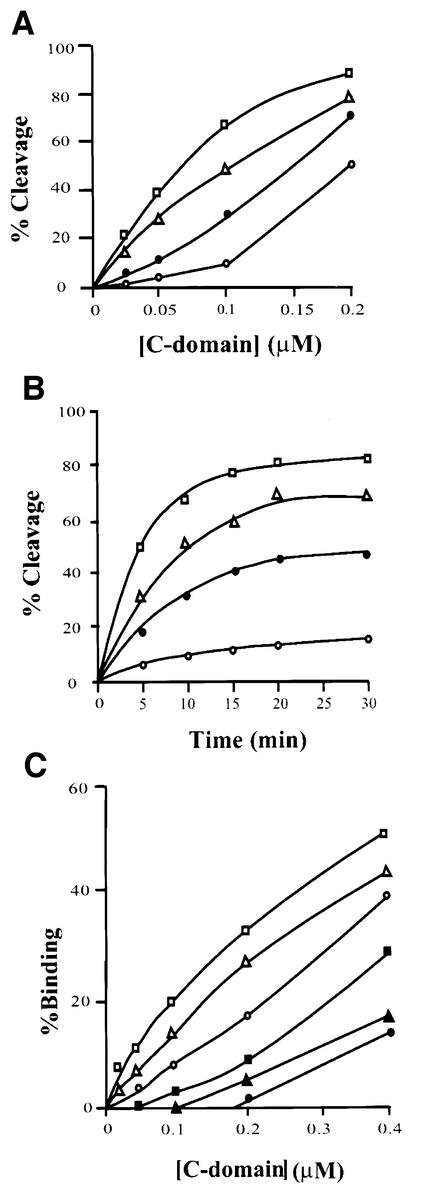Fig. 4. Effect of N-domain in trans on cleavage activity and binding of the C-domain. (A) DNA cleavage as a function of C-domain concentration in the presence of different amounts of N-domain. Labeled suicide substrate (0.02 µM) (see legends to Figure 2B) was incubated at 20°C for 30 min with different concentrations of C-domain in either the absence (open circles) or presence of 0.5 µM (closed circles), 0.75 µM (triangles) or 1.0 µM (squares) N-domain (see Materials and methods). The reactions were quenched in 0.2% SDS. (B) DNA cleavage by a fixed concentration of C-domain as a function of time, in the presence of different amounts of N-domain. As described in (A) and Materials and methods, 0.1 µM C-domain in either the absence (open circles) or presence of 0.5 µM (closed circles), 0.75 µM (triangles) or 1.0 µM (squares) N-domain. The reactions were quenched in 0.2% SDS and analyzed by electrophoresis through 12% (w/v) SDS–PAGE (see Materials and methods). (C) Effect of N-domain in trans on binding of C-domain to core-type DNA. The indicated amounts of C-domain were incubated with 0.1 µM 32P-labeled 35 bp core-type DNA at room temperature for 20 min in the absence or presence of different concentrations of N-domain, as described in Materials and methods. The reaction was analyzed by electrophoresis in 8% polyacrylamide gel and the amount of protein–DNA complex formed was quantitated by scanning the gels on a phosphorimager (Fuji). Retarded complexes with electrophoretic mobilities corresponding to one or two bound C-domains (open or closed symbols, respectively) are plotted as a function of C-domain concentration. Reactions were either in the absence of N-domain (circles) or in the presence of 0.5 µM (triangles) or 1.0 µM (squares) N-domain.

An official website of the United States government
Here's how you know
Official websites use .gov
A
.gov website belongs to an official
government organization in the United States.
Secure .gov websites use HTTPS
A lock (
) or https:// means you've safely
connected to the .gov website. Share sensitive
information only on official, secure websites.
